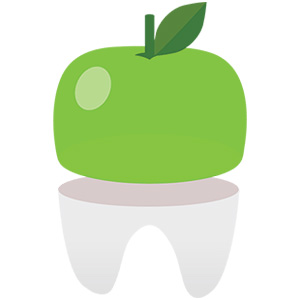
Want to go green but not sure where to start?
Fresh Orthodontics has you covered. As an eco-friendly Brooklyn orthodontic practice, we use digital charting instead of paper, non-toxic sterilization systems and digital x-rays that don’t require film or chemicals to develop. These little changes add up and it’s no different on an individual level. By embracing some simple lifestyle tweaks, you too can reduce your carbon footprint.
- Go meatless a few days a week – How can you reduce your carbon footprint at home? Eat less meat! You don’t have to become a vegetarian or give up meat completely but reducing your meat consumption by going meatless even a few days a week is one of the most effective things you can do. Research shows the livestock industry generates more greenhouse gas emissions globally than all of the cars, trains, ships and planes combined. Of all the livestock emissions, beef and dairy comprise 65%, so to further reduce carbon footprint, consider adding vegan meals into your rotation. Try out different meatless recipes or head to one of the many fantastic vegetarian and vegan restaurants in Brooklyn.
- Drive less – This is an easy one for those of us who live in New York City, so pat yourself on the back if you’re already walking, biking and using public transportation instead of hopping in your car or taking an Uber. While not all areas of the country have access to public transportation or bike lanes, in Brooklyn, we do. On nice days, consider heading into the office or to the coffee shop on foot or on your bicycle. You’ll get in exercise and reduce your carbon footprint. When it’s cold or rainy, take public transportation instead of getting a cab. While, yes, many types of transport like buses use fuel, they’re more efficient because less is used per passenger. Times you do splurge on an Uber, cab or a car service, share with a buddy.
- Be efficient with laundry – Producing clothing, particularly cotton, requires a lot of energy, water and often harmful chemicals too. As for how to reduce your carbon footprint, simply choosing eco-friendly clothing like items made out of organic cotton can be helpful. However, even more important, is how you care for your clothing. A load of laundry uses 40 gallons of water! Try to wait until you have enough dirty clothes for a full load before doing laundry and use cold water when you do. Additionally, a load in the dryer actually uses five times as much electricity as the washer. Invest in a drying rack or a clothesline and hang your clothes to dry when you can.
- Eat seasonally and locally – Enjoying in-season, local produce not only tastes better, it’s also an easy way to go green. Shipping foods from out of state or out of the country requires fuel and refrigeration and comes at an environmental cost. Buying organic fruits, veggies, dairy and meat from small local farmers is more eco-friendly. Also, by choosing organic, you know the fruits and veggies haven’t been sprayed with chemicals that are bad for your health and the Earth. Opt for fresh food when you can over processed food, since processing plants are another source of pollution. We’re lucky to live in Brooklyn where farmer’s markets are abundant and we have year-round access to whole, fresh foods. Find the closest Greenmarket to you here.
- Support eco-friendly companies and businesses – There are plenty of eco-friendly companies in Brooklyn (we’re one of them!) and around the world. Consumers have power and by supporting environmentally-responsible businesses, it sends a message to other companies that it’s something people value. You also reduce your individual carbon footprint because fewer resources are being expended on your behalf.
- Reuse, Recycle and Buy Quality Items – Everyone wants to save money and it can be tempting to purchase discount stuff from big box stores. However, according to the Ocean Foundation, 29% of greenhouse gases are the result of “provision of goods” and manufacturing produces four to eight pounds of carbon dioxide for each pound of manufactured product. Plastic, in particular, is a big offender. If something is made overseas, then you have to add shipping the product to the equation too. Plus, cheaply-made, mass-produced items, like clothing and furniture, often wear out or break faster and you end up buying a replacement sooner. In the end, you don’t really save money and you send more waste to a landfill. Buying second-hand from a thrift store is about as eco-friendly as you can get. Nothing new is manufactured and you extend the life of existing products. When you do need to buy new, going for higher quality, eco-friendly clothing and goods that will last, especially those made locally and responsibly, is a great way to reduce your carbon footprint. When you’re done with items, recycle them by donating them, gifting them or selling them at a consignment shop or find creative ways to reuse them.
- Unplug gadgets – That plugged in phone charger you are not using is consuming energy. When you are not actively charging your phone or using a lamp or appliance, unplug it or turn off your surge protector. “Vampire power” is responsible for using billions of dollars in energy in the United States every year. Make it a habit to only plug things in when you need to use them to reduce your carbon footprint.
All of these tips to reduce your carbon footprint are easy to put into action and won’t interfere with your day-to-day life. Every little bit of effort can have a big impact. Now, to get your dream smile in a way that’s good for you and the planet, book a free consultation at Fresh Orthodontics today!













